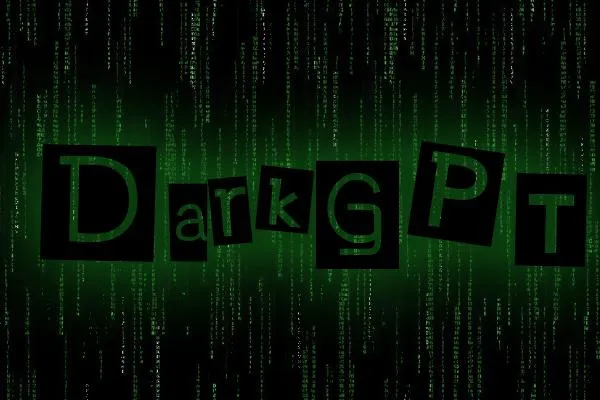
DarkGPT: Why Hackers Don’t Need to Be Smart Anymore (But You Do)
DarkGPT is the dark web’s newest weapon—and it’s coming for small businesses. This AI-powered cybercrime tool is helping hackers launch hyper-targeted phishing attacks, develop undetectable malware, and create deepfakes that trick even the smartest employees. In 2025, cybersecurity threats like DarkGPT are redefining what small and mid-sized business owners need to watch for. With AI in cybercrime on the rise, phishing scams, malware attacks, and identity fraud are now faster, cheaper, and harder to detect than ever before. If you’re not already investing in AI-powered cybersecurity, phishing training, and zero trust security, it’s time to catch up—before DarkGPT catches you.
DarkGPT: The Dark Web’s New AI Nightmare for 2025
Cybercrime just got an upgrade—and it’s using artificial intelligence.
A new tool called DarkGPT is making serious noise in hacker circles. Think of it like ChatGPT... but evil. It’s an “anything goes” version of AI, stripped of the rules that keep regular tools safe and ethical.
For just a couple hundred bucks a year, cybercriminals can subscribe to DarkGPT on the dark web. And with it, even amateurs can now launch sophisticated phishing attacks, build malware, create deepfakes, and target businesses like yours with shocking accuracy.
With AI-driven cyberattacks exploding—and phishing up over 700% in 2024—this isn’t a far-off threat. It’s happening right now.
So, what exactly is DarkGPT? And how do you protect yourself before it shows up in your inbox?
What Is DarkGPT (and Why Should You Care)?
DarkGPT is a rogue AI tool built to help hackers, scammers, and cybercriminals. It works a lot like the popular ChatGPT, except it’s been modified (or “jailbroken”) to do things legit AI models won’t—like write ransomware code or craft phishing emails pretending to be your bank, boss, or billing department.
Here's what criminals are using it for:
Phishing Emails & Texts – That look scary real, with personal info and company branding.
Malware Creation – Adaptive code that can sneak past antivirus tools.
Deepfakes – Fake videos or voice messages to impersonate people in your company.
Password Scanning – Hunting for weak systems to break into.
Data Analysis – Sifting through stolen data to find juicy targets.
It’s fast, cheap, and wildly effective—especially in the hands of someone who knows what they’re doing. But even total beginners are using it, which means the number of threats is going up—fast.
Real-Life Example: How One Hacker Used DarkGPT to Steal $500K
In March 2025, a hacker used DarkGPT to scan through stolen email credentials from a retail company. They then created highly-targeted phishing emails that looked exactly like real company emails—down to the logo, tone, and recent news mentions.
Within 48 hours, 200 employees clicked. The attacker locked down company systems with ransomware and stole customer data. The ransom demand? $500,000 in crypto.
Scary part? That could’ve been your business.
What Makes DarkGPT Different from Other Hacker AIs?
There were tools like WormGPT and FraudGPT before this, but DarkGPT is next level. Here’s what sets it apart:
Smarter Attacks: It pulls real-time data from the internet to make its scams more believable.
More Features: It can create phishing emails, malware, deepfakes, and scan for weak systems—all in one place.
No Skills Needed: Hackers don’t even need to know how to code. Just type what you want, and DarkGPT delivers.
Anonymity: Unlike legal AI tools, it doesn’t log user activity, making it perfect for dark web users.
How to Protect Your Business from DarkGPT (Without Becoming a Tech Expert)
If you're a business owner, manager, or IT lead, here's how to stay ahead:
1. Use AI-Powered Cybersecurity Tools
Fight fire with fire. Tools like CrowdStrike and Darktrace use AI to spot unusual behavior (like DarkGPT-created emails or network activity) and stop it fast.
2. Train Your Team to Spot Phishing
If it looks “off,” don’t click. Run regular phishing simulations and teach employees how to verify emails, even if they look real.
3. Turn On MFA (Multi-Factor Authentication) Everywhere
If someone steals your password, MFA adds a second lock. This simple step prevents tons of attacks from succeeding.
4. Set Up Zero Trust Security
Don’t assume any user or device is safe. Require verification at every step.
5. Monitor the Dark Web for Your Info
There are services out there that can alert you if your business is being mentioned or if your credentials are for sale.
What’s Coming Next: Deeper Fakes and Smarter Hacks
AI is getting more powerful—and that includes AI used by the bad guys. Expect to see:
Deepfake Phone Calls from “your CEO” asking for wire transfers.
AI-Powered Bots that can hold entire fake conversations over email or chat.
Faster Exploits—hackers finding and attacking new vulnerabilities in hours, not weeks.
There’s also concern about quantum computing breaking today’s encryption someday. That’s a future post, but it’s worth keeping an eye on.
My Final Thoughts
DarkGPT is bad news—but it’s not unbeatable. The smartest move you can make in 2025 is to start protecting your business before something goes wrong.
Train your people. Update your tools. And if you're feeling overwhelmed, get help. That’s what I’m here for.
If you want to talk through your security setup or find out if your business is at risk, reach out for a free consult. We’ll handle it The Wright Way.
